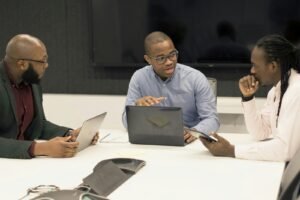
Imagine earning passive income while holding onto your favorite cryptocurrencies. With the rise of crypto staking rewards, it’s now possible to do just that. In this article, we will explore the world of crypto staking rewards and break down everything you need to know to start earning while you HODL. From understanding the concept of staking to choosing the right cryptocurrencies and platforms, we’ve got you covered. So grab a cup of coffee, sit back, and let’s dive into the ultimate guide to crypto staking rewards!
What is Crypto Staking?
Crypto staking is a process in which individuals or entities can participate in the validation and security of a blockchain network by holding and “staking” their cryptocurrency tokens. By staking their tokens, participants can earn staking rewards, which are typically given out as additional tokens or coins.
Staking involves locking up a certain amount of tokens in a digital wallet for a predetermined period, during which the tokens are used to maintain the network’s operations. In return for their contribution, stalkers are rewarded with a portion of the transaction fees or newly minted tokens generated by the network.
Benefits of Crypto Staking
Passive Income
One of the main benefits of crypto staking is the ability to earn passive income. You can receive regular rewards by staking your tokens without actively trading or participating in the market. This can be particularly appealing for investors who are looking for ways to generate income from their crypto holdings without the need for constant monitoring or active trading strategies.
Token Security
Staking also provides an additional layer of security for the token holder. By participating in the staking process, you are actively contributing to the decentralization and security of the blockchain network. This reduces the risk of potential attacks or malicious activities, as the more tokens that are staked, the higher the level of security and immutability of the network.
Network Consensus
Staking is essential to many blockchain networks’ consensus mechanisms, such as Proof-of-Stake (PoS) or Delegated Proof-of-Stake (DPoS). Through staking, participants play a crucial role in the network’s governance and decision-making processes. This allows stakeholders to have a say in the direction and development of the network, making it more decentralized and resilient.
Incentivizing Ownership
Staking can incentivize long-term token holders to keep their tokens rather than sell them on the market. By staking their tokens and earning rewards, investors are motivated to hold onto their assets, which can contribute to a healthier and more stable token economy. This helps to reduce market volatility and encourages a long-term approach to token ownership.
Different Types of Staking Rewards
Proof-of-Stake (PoS) Rewards
Proof-of-Stake (PoS) rewards are earned by staking a certain amount of tokens and participating in the network’s consensus mechanism. The rewards are typically distributed in proportion to the stalker’s stake in the network. This means that the more tokens you stake, the higher your potential rewards will be.
Delegated Proof-of-Stake (DPoS) Rewards
Delegated Proof-of-Stake (DPoS) is a variant of PoS in which token holders can delegate their staking power to a trusted third party, commonly known as a “delegate” or “validator.” By delegating their stake, token holders can still earn staking rewards without having to actively participate in the staking process themselves. The delegates are responsible for maintaining the network and validating transactions on behalf of the token holders.
Masternode Rewards
Masternodes are specialized nodes in certain blockchain networks that perform additional functions beyond transaction verification and validation. By running a master node and staking a significant amount of tokens, participants can earn additional rewards. These rewards can vary depending on the specific network and the services provided by the master node.
Staking Yield
Staking yield refers to the percentage of annual rewards that can be earned by staking a certain amount of tokens. The staking yield can vary depending on factors such as network activity, token price, and staking duration. Higher staking yields can incentivize more participants to stake their tokens, contributing to a stronger and more secure network.
How to Start Staking
Choose a Coin or Token to Stake
The first step in starting staking is to choose a coin or token that supports staking. Not all cryptocurrencies offer staking rewards, so it’s important to do your research and select a token that aligns with your staking goals and preferences.
Select a Wallet or Exchange
Once you have chosen a staking-compatible coin or token, you will need to select a wallet or exchange that supports staking. Some wallets and exchanges have built-in staking features, while others may require you to transfer your tokens to a dedicated staking wallet.
Check Staking Requirements
Before staking your tokens, it is important to familiarize yourself with the specific staking requirements of the network you are participating in. This includes understanding the minimum staking amount, staking period, and any additional criteria or rules set by the network.
Transfer Coins to Staking Wallet or Address
Once you have met the staking requirements, you can transfer your coins to the designated staking wallet or address. This will allow you to stake your tokens and start earning rewards. It is important to follow the instructions provided by the wallet or exchange to ensure a smooth and secure transfer of your tokens.
Calculating Staking Rewards
Staking Rate
The staking rate refers to the annual return or yield that can be earned by staking a certain amount of tokens. This rate can vary depending on factors such as network activity, token price, and staking duration.
Stake Amount
The stake amount refers to the number of tokens that are being staked. Typically, the higher the stake amount, the higher the potential rewards.
Staking Period
The staking period refers to the length of time that tokens are staked. Some networks may require a minimum staking period, while others may allow for flexible staking durations. The staking period can affect the overall staking rewards earned.
Reward Calculation Formula
The exact calculation formula for staking rewards can vary depending on the network and its specific staking mechanism. Generally, the formula takes into account factors such as the stake amount, staking period, and the network’s overall reward distribution algorithm.
Factors Affecting Staking Rewards
Token Price
The price of the token being staked can have a significant impact on the value of the staking rewards earned. If the price of the token increases, the value of the staking rewards will also increase. Conversely, if the token price decreases, the value of the rewards will decrease as well.
Network Activity
The level of network activity can affect the overall staking rewards earned. Higher network activity, such as an increased number of transactions or more participants staking their tokens, can result in higher overall rewards. Conversely, lower network activity may lead to lower rewards.
Total Staked Amount
The total amount of tokens that are staked in the network can affect the staking rewards. Generally, the higher the total staked amount, the lower the individual staking rewards will be. This is because the rewards are typically distributed proportionally among all stakes based on their stake amount.
Staking Duration
The length of the staking period can also impact the overall rewards earned. Some networks may offer higher rewards for longer staking periods, while others may provide more flexibility in terms of staking duration. It is important to consider the potential rewards and the desired staking period when deciding on a staking strategy.
Common Staking Platforms
Ethereum 2.0
Ethereum 2.0 is an upcoming upgrade to the Ethereum network that aims to transition from a Proof-of-Work (PoW) to a Proof-of-Stake (PoS) consensus mechanism. This upgrade will enable ETH holders to stake their tokens and earn rewards for participating in the network’s validation process.
Cardano
Cardano is a blockchain platform that utilizes a Proof-of-Stake (PoS) consensus mechanism. By staking ADA tokens, participants can help secure the Cardano network and earn rewards in the process.
Tezos
Tezos is a blockchain platform that also utilizes a Proof-of-Stake (PoS) consensus mechanism. By staking XTZ tokens, participants can participate in the governance of the Tezos network and earn staking rewards.
Polkadot
Polkadot is a multi-chain platform that uses a unique variation of Proof-of-Stake (PoS) called nominated proof-of-stake. By staking DOT tokens, participants can contribute to the security and maintenance of the Polkadot network.
Cosmos
Cosmos is a network of interconnected blockchains that utilizes a delegated Proof-of-Stake (DPoS) consensus mechanism. By staking ATOM tokens, participants can delegate their stake to validators and earn rewards for helping to secure the Cosmos network.
Risks and Considerations
Inflation Risk
One of the potential risks of staking is inflation. Depending on the network’s monetary policy, staking rewards may be created through the minting of new tokens. This increased token supply can lead to inflationary pressures and potentially dilute the value of existing tokens.
Liquidity Lock-up
When staking tokens, they are typically locked up for a specific period. This means that you may not have immediate access to your tokens during the staking period. It is important to consider the potential lack of liquidity and the impact it may have on your ability to trade or sell your tokens.
Network Consensus Failure
While staking helps to secure the network, there is still a risk of consensus failure or a 51% attack. If a significant portion of the staked tokens are controlled by malicious actors, they may be able to manipulate the network’s consensus and potentially cause disruptions or double-spending.
Smart Contract Vulnerabilities
If you are staking your tokens using a smart contract, there is a risk of vulnerabilities or bugs in the code. Smart contracts are subject to potential hacking or exploitation, which could result in the loss of staked tokens. It is important to carefully review the smart contract and ensure that adequate security measures are in place.
Staking vs. Mining
Energy Efficiency
One of the key differences between staking and mining is the energy efficiency. Mining, particularly in Proof-of-Work (PoW) systems, requires significant computational power and electricity consumption. In contrast, staking requires far less energy consumption, as it relies on holding and validating tokens rather than solving complex mathematical puzzles.
Hardware Requirements
Mining often requires specialized hardware, such as ASICs (Application-Specific Integrated Circuits), to perform the necessary computational work. Staking, on the other hand, generally requires only a computer or a compatible device, along with the tokens being staked.
Cost of Entry
The cost of entry for mining can be quite high, considering the need for expensive hardware and the associated electricity costs. Staking, on the other hand, typically requires only the purchase of tokens and the selection of a compatible wallet or exchange.
Profitability Comparison
The profitability of mining and staking can vary depending on factors such as network difficulty, token price, and electricity costs. Historically, mining has been more profitable for certain cryptocurrencies, but staking has gained popularity due to its energy efficiency and lower barriers to entry.
Conclusion
Crypto staking provides an opportunity for individuals and entities to participate in the validation and security of blockchain networks while earning staking rewards. It offers benefits such as passive income, token security, and network consensus. By choosing a staking-compatible coin, selecting a wallet or exchange, and understanding staking requirements, anyone can start staking their tokens.
Factors such as token price, network activity, total staked amount, and staking duration can affect the staking rewards earned. It is important to consider these factors when calculating potential rewards and choosing a staking strategy.
Common staking platforms like Ethereum 2.0, Cardano, Tezos, Polkadot, and Cosmos offer opportunities for staking and earning rewards. However, it is essential to be aware of the risks involved, such as inflation risk, liquidity lock-up, network consensus failure, and smart contract vulnerabilities.
In comparison to mining, staking is more energy-efficient, requires less specialized hardware, and has lower entry costs. The profitability of mining and staking can vary, but staking has gained popularity due to its accessibility and sustainability.
Overall, crypto staking is a compelling way to actively participate in the blockchain ecosystem, contribute to network security, and earn rewards for supporting the growth and decentralization of cryptocurrencies.
For more information on Online business opportunities, check our post on Complete Guide to Affiliate Marketing or check out our recommended tools that will aid your online business.











1 thought on “The Ultimate Guide to Crypto Staking Rewards”